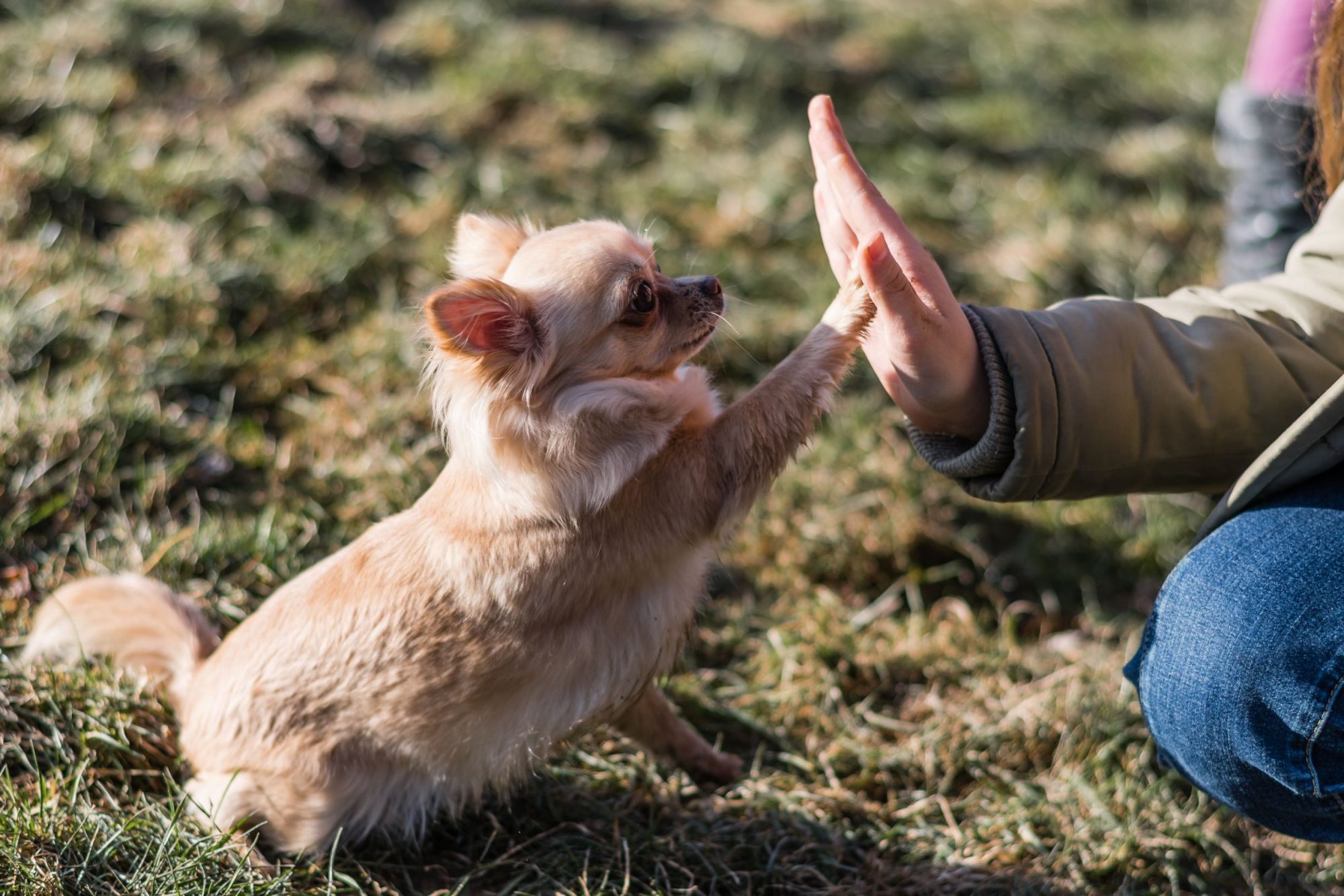It’s a Good Thing You’re Cute: Our Dog Training Guide

Your neighbor’s well-behaved Weimaraner has set the bar high: he’s calm, obedient, and walks in perfect lockstep with his owner. Meanwhile, your high-energy Labrador barks at insects, leaps at everyone he meets, and drags you down the sidewalk like you’re his living, breathing pull-toy. We can help!
Dogs make loving, loyal companions, and sometimes, all it takes is a little positive reinforcement to make the time you spend with your dog even more enjoyable. Our experts at MarketPlace Veterinary Hospital have compiled some basic training tips to guide you.
Training Basics
Puppy training (or dog training if your pet is mature) is an enriching activity that can help strengthen the bond you share with your dog. For most dog owners, the first experience with puppy training is house training. If you were the one who housetrained your dog, you already have some valuable experience with dog training tactics.
Here are a few ground rules before you begin puppy training or dog training:
- Use only positive reinforcement strategies.
- Be gentle and compassionate.
- Keep training sessions brief and upbeat.
- Stock up on special treats ahead of time (choose treats that your dog doesn’t receive otherwise).
- Think consistency and repetition.
Timing is Everything
It’s better to train dogs when they’re younger, before undesirable behaviors become habits. The flip side is that puppies have much shorter attention spans than older dogs. You know your pet better than anyone, so if the time seems right for a quick lesson, go for it. Remember, the key is to reward (and therefore, reinforce) good behavior, so don’t make a fuss over the missteps. As long as you keep your training positive and consistent, you’re on the right track! Are there other people in your household? Make sure they understand the new skills you’re trying to encourage.
Basic Commands
Teaching your dog basic commands like “sit,” “stay,” or “come,” isn’t just practical, it can help keep your dog safe. If you haven’t done so already, consider having your dog microchipped in case he gets off his leash. And speaking of taking your dog for a walk …
Dog Walking
A hallmark of dog ownership is dog walking, and this experience is much more pleasant once you’ve taught your dog to stop pulling on his leash. A simple trick: stop walking when he tugs on the leash, and reward him with his special treats when he successfully walks alongside you.
Dogs are furry little sponges, always soaking up information from their environment. Negative experiences can leave lasting impressions, so keep all of your instruction calm and cheerful, and shower your dog with treats and affection when he makes positive changes.
Our experts are always here to help. Ask us about training tips at your dog’s next checkup, or give us a call at (916) 939-1705.

